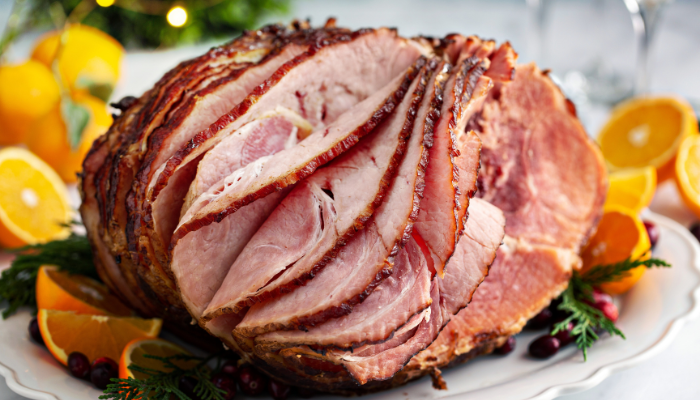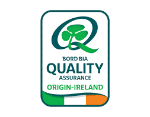20 December 2024
The story behind your Christmas ham

The Christmas ham is an institution in many homes throughout Ireland, served along with the turkey as the centrepiece of the festive celebrations. Ciarán Carroll describes the journey of your Christmas ham, from farm to fork.
Behind each ham is a careful process of pig production, preparation, and curing that transforms the meat into the ham we all know and love.
Pig production – the first step
Pig production begins on the many farms specialising in rearing pigs. The 260 pig farms in Ireland vary in size, with the average herd comprising 530 sows. The process starts with selecting healthy pig breeds, the main ones here being Large White, Landrace, and Duroc (a breed known for its juicy flavour).
The pigs are reared in a temperature-controlled environment to ensure optimal health and welfare. They are fed a nutritionally balanced diet, typically consisting of barley, wheat, maize, soybeans/beans, minerals, and vitamins. The aim is to produce high-quality pig meat (pork) with good fat marbling (for flavour) and texture.
Pigs are generally reared from “birth to bacon” (ham) in about six months, reaching a sale weight of 110–120kg. Once they reach this weight, they are processed humanely in facilities that follow strict regulatory guidelines to ensure food safety and quality.
Pork to Ham – the curing process
Once the pig is processed, the leg of the pig, the main cut used for ham production, is carefully prepared for curing. The Christmas ham involves two key processes: curing and cooking, to preserve and flavour the meat.
Curing
Curing gives the ham its distinctive taste and extends its shelf life. Traditionally, this was done by using salt to draw moisture from the meat, preventing spoilage. Nowadays, the curing process involves the use of brine; a mixture of water, salt, sugar, and sometimes nitrates. The leg is either submerged in the brine or injected with it to distribute the flavour evenly. The process can take several days to weeks, depending on the method used.
Smoking
For those who prefer smoked hams, this step adds a rich, savoury flavour. The smoking process involves exposing the cured ham to low-temperature smoke from burning hardwood, such as hickory or oak. This gives the ham a smoky aroma and enhances its flavour.
Cooking & Glazing
Before reaching the shop shelf, hams are often fully cooked, making them ready to eat for the Christmas feast. A glaze, often made of honey, brown sugar, mustard, and spices, is frequently applied. When baked, this glaze caramelises, giving the ham its beautiful golden-brown finish.
Teagasc Pig Development Department has produced a video demonstration on Cooking Your Christmas Ham.
The final product is a succulent ham, full of flavour, ready to be served at the Christmas table. While it’s best enjoyed hot alongside your Christmas turkey and all the trimmings, any leftover ham (if there is any) can be sliced and served cold in a salad, sandwich, or wrap.
In summary, the Christmas ham reflects the combined efforts of farmers, butchers, and food producers who use modern farming techniques and traditional curing processes. Their work ensures that you and your family can enjoy a festive meal, savouring both the taste and craftsmanship behind the ham.
 Remember to look for the Bord Bia Origin-Ireland logo when shopping for your Christmas ham. This logo guarantees that your ham was born, reared, and processed in Ireland, offering a great way to support Irish pig farmers this Christmas.
Remember to look for the Bord Bia Origin-Ireland logo when shopping for your Christmas ham. This logo guarantees that your ham was born, reared, and processed in Ireland, offering a great way to support Irish pig farmers this Christmas.
For those who enjoy sausage meat at Christmas time, Teagasc Pig Development Department has also produced a video recipe for Festive Irish Sausage Rolls.
